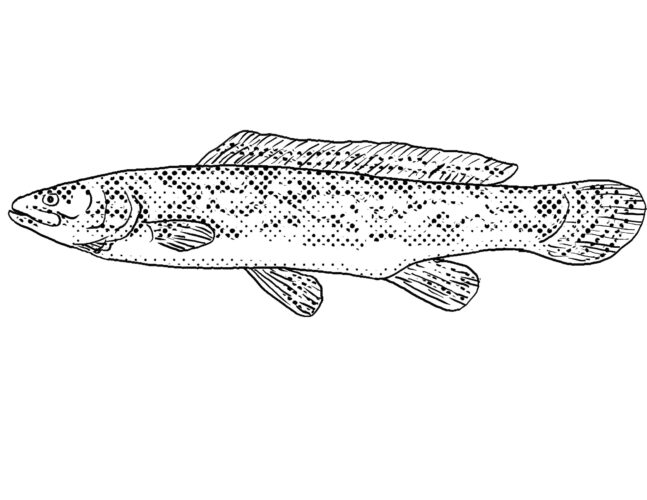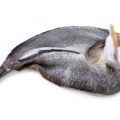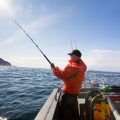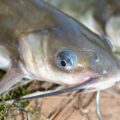Mudfish, also known as bowfin, are freshwater fish that can be found in North America. They are known for their tough, armor-like scales and their ability to breathe air.
First, it’s important to understand that mudfish have sharp teeth and powerful jaws. They are also known to be aggressive when threatened or handled. Therefore, it is not recommended to try and hold a mudfish with your bare hands. If you do need to handle a mudfish, it’s best to use gloves or a net to avoid injury.
Additionally, mudfish are known for their slimy skin which can make them difficult to handle. Their skin secretes a mucus that helps protect them from predators and parasites. This slime can make it challenging to get a good grip on the fish without causing harm. In the next section, we will explore some tips for safely holding a mudfish if necessary.

Understanding Mudfish
Mudfish, also known as Amia calva, is a primitive freshwater fish belonging to the family Amiidae. They are elongated and have a snakehead-like appearance, with a flattened head and a long dorsal fin. Mudfish are predatory fish and are commonly found in the muddy waters of North America.
Mudfish are part of the order Amiiformes, which also includes the mud pike and other holostei. They are considered primitive fish because they have retained some characteristics of their ancient ancestors, such as a heterocercal tail and a spiral valve intestine.
Mudfish are often caught by anglers for sport fishing, but it is important to note that they are not suitable for consumption due to their high levels of mercury. It is also illegal to possess or transport live mudfish in some states.
In summary, mudfish are a fascinating and unique species of freshwater fish. While they may be interesting to observe, it is important to handle them with care and follow all regulations regarding their possession and transportation.
Habitat and Behavior
Mudfish, also known as Bowfin, are freshwater fish found in North America, primarily in swamps, lowland rivers, and lakes. They prefer shallow waters with abundant vegetation, as they use vegetation for cover and nesting.
Mudfish are bimodal breathers, meaning they can breathe both through their gills and a pneumatic duct that connects to their swim bladder. This allows them to survive in oxygen-depleted environments, such as swamps and stagnant waters.
In terms of appearance, mudfish have a cylindrical body shape with an olive color and a white or cream-colored underside. They have a distinctive caudal fin that is bright green with a black eyespot, and an undulating dorsal fin that runs along their back.
Mudfish are carnivorous and feed on a variety of aquatic insects, fish, and other small animals. They are known for their aggressive behavior and will attack anything that enters their territory.
While mudfish are not typically sought after for sport fishing, they are considered a game fish in some areas of the eastern United States. They can be challenging to catch due to their aggressive nature and strong fighting ability.
In addition to their importance in the fishing industry, mudfish also play a crucial role in the ecosystem. They help to control populations of smaller fish and insects, and serve as an important food source for larger predators in their habitat, such as alligators and birds of prey.
Overall, mudfish are fascinating creatures with unique adaptations that allow them to thrive in a variety of freshwater environments.
Catching Mudfish
Catching mudfish can be a fun and rewarding experience for any angler. To catch a mudfish, you will need the right equipment and technique. Here are some tips to help you catch mudfish successfully.
First, you need to choose the right bait. Mudfish are known to be opportunistic feeders and will eat almost anything that comes their way. Live bait such as worms, minnows, and crayfish are great options. You can also use artificial lures such as spinnerbaits, jigs, and plastic worms to attract mudfish.
Next, you need to choose the right fishing gear. A medium to heavy rod with a braided line and a strong reel is recommended. Mudfish are known to be strong fighters, and a braided line will give you the strength to reel them in. You should also use a dark spot hook with a pectoral fin to increase your chances of catching a mudfish.
When fishing for mudfish, it is important to keep your bait moving. Mudfish are attracted to movement, and a stationary bait will not be as effective. You can also try different techniques such as twitching or jigging to attract mudfish.
Once you have caught a mudfish, it is important to bleed it immediately. This will improve the quality of the meat and make it taste better. You can also use a tackle box to keep your fishing gear organized and easily accessible.
In conclusion, catching mudfish can be a fun and rewarding experience. By using the right equipment and technique, you can increase your chances of catching a mudfish. Remember to keep your bait moving and bleed your catch immediately to improve the quality of the meat.
Mudfish as a Food Source
Mudfish, or bowfin, is a type of freshwater fish that can be found in North America. While it is often considered a “trash fish” and not commonly sought after, it is actually edible and can be quite tasty if prepared properly.
One thing to keep in mind when handling mudfish is their sharp teeth. You’ll want to be careful when cleaning and filleting them to avoid getting bitten. However, once the fish is cleaned and prepared, it can be cooked in a variety of ways, such as fried or grilled.
When it comes to taste, mudfish has a unique flavor that is often described as similar to frog legs. The flesh is white and firm, and the fillets are boneless, making them easy to eat. Some people also enjoy eating the eggs of female mudfish, which are often referred to as “choupique caviar.”
While mudfish can be a good source of protein, it’s important to note that they are not a common food source and are not widely available. Additionally, there are some concerns about the larvae of mudfish being poisonous, so it’s important to be cautious when handling them.
Overall, if you can find and properly prepare mudfish, it can be a tasty and unique addition to your diet.











